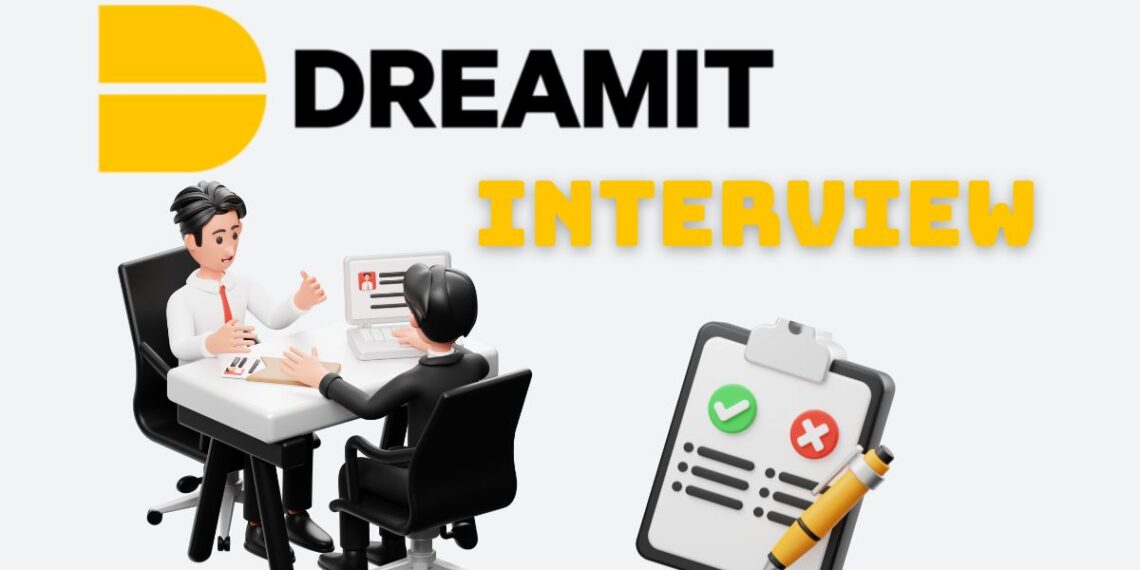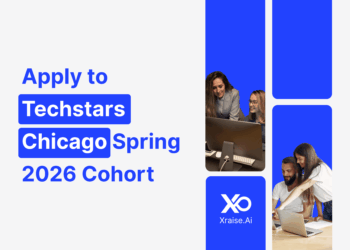So, you’ve landed an interview with the Dreamit Accelerator. That stoked feeling? Totally justified 🔥 — Dreamit is one of the most respected programs for growth-stage startups tackling serious markets in healthtech or securetech. But right behind the pride sits a familiar founder anxiety: Am I ready for their interrogation? 😬
Let’s be honest, the Dreamit Accelerator interview has a reputation. Founders routinely mention rapid-fire questions, “no-nonsense” panelists, and a focus that cuts straight to the business bone 💼. This article is your detailed, experience-driven playbook for prepping — and excelling — when you’re in the virtual hot seat 🎯. Every tip here is grounded in dozens of real Dreamit accelerator interview stories and current best practices. Ready to go from “nervous” to “locked in”? Let’s dig in 🚀.
What’s Really About to Happen: Inside the Dreamit Accelerator Interview
The Dreamit interview isn’t a friendly chat — it’s a pressure test designed to evaluate how well you handle intensity, structure, and sharp feedback. You’re not walking into a casual conversation; you’re entering a high-signal environment where every word matters. Before you zero in on your pitch, let’s get tactical on what to expect and who’s in the (virtual) room:
- 🎤 Panel interview, not 1-on-1: Expect 2–3 Dreamit team members: usually a Managing Partner/Director for your vertical (think Steve Barsh for Healthtech), and a Program Director. Sometimes, other senior staff join.
- 💻 All virtual, all business: Since 2020, everything is on Zoom or Google Meet. Don’t expect homey chat — this is direct and focused.
- ⏱️ 2–3 interview rounds in total: First might be a quicker screening (30 mins), but the main event is a deep-dive panel (45–60 mins, sometimes longer).
- 📬 What comes after: If you make it through, Dreamit typically decides within a few weeks. Sometimes you’ll get follow-up questions or due diligence docs to provide.
- 🧠 Who holds the keys: Final decisions are driven by the Managing Partner/Director for your vertical. Your confidence, clarity, and coachability deeply influence their call.
Real founder vouche:
“The Dreamit interview was no joke. We had 3 people on their side. They asked rapid-fire questions about our market size calculations and customer acquisition cost. My co-founder and I prepped by assigning lead roles for certain topics, which helped us stay organized under pressure. Felt like a proper VC grilling.”
Key takeaway:
Dreamit interviews are more “due diligence deep dive” than “casual get to know you.” Walk in knowing you’ll be challenged.
What They Really Ask in Dreamit Accelerator Interview(and Why)
Dreamit isn’t looking for polished pitch decks — they’re hunting for substance, serious traction, and founder grit. You’ll face direct, data-driven, and sometimes grilling questions. Here’s how this plays out:
The Interview Dynamics
- 🎯 Direct and focused: Expect little small talk. Dreamit interviewers want concise, data-backed answers. Anything fuzzy or rambling gets cut off fast.
- 🚫 “No Fluff” rule: Steve Barsh, a managing partner, is known for stressing this in interviews and podcasts: “We look for founders who have the facts and aren’t afraid of tough questions.”
- 🧭 Role split: Managing Partner/Director usually drives strategic lines — big market, defensibility, and founder-market fit. Program Director/Manager asks about traction, ops, and leveraging Dreamit’s model.
- 🔄 Everyone asks: Panelists jump in with rapid-fire follow-ups. Sometimes one is mostly observing — but don’t let your guard down: every word you say is being weighed.
What Dreamit Actually Cares About
- 👥 Team Quality: Can you execute? Do you have deep domain chops, resilience, and (critically) coachability?
- 📊 Traction: Actual revenue, paying pilots, user engagement. Healthtech/Securetech? Be ready to show proof of market validation (e.g., paid pilots, LOIs).
- 🌍 Market Size: Is this a $1B+ opportunity? Are you solving a ‘hair-on-fire’ problem or a nice-to-have?
- 🛡️ Product/Defensibility: What’s your unique edge? Have you built something a BigCo can’t squash into a feature?
- 📈 Metrics Mastery: Know your MRR, CAC, LTV, churn, conversion rates cold — and how they’ve moved recently.
- 🎯 Program Fit: Show you understand Dreamit’s Customer/Investor Sprint approach and why it’ll truly drive your growth this year.
Vibe check:
“They are very direct and ask tough questions. Be prepared to defend your assumptions.”
Some Typical Questions (Prepare for These)
- ❓ What problem are you solving, and why is now the right time?
- 📉 What are your core KPIs? Can you walk us through the (actual) sales funnel?
- 🆚 What is your competitive edge, and who are your primary competitors?
- 🧑🤝🧑 Tell us about your co-founders and why this is the right team.
- 🎯 What specific milestones will Dreamit help you achieve in the next 6 months?
What Founders Miss:
Dreamit deeply expects you to know your weak spots. “They tried to poke holes in our business model, which is fair. It made us realize we needed more concrete proof points before approaching similar accelerators.”

Rapid-Fire Prep: The Dreamit “Ready List” for Founders
Dreamit interviews move quickly and dive deep — that’s why your preparation needs to be just as sharp. The panel expects thoughtful, concise, data-backed responses that demonstrate your traction, clarity, and self-awareness. Before the call, use this checklist to bulletproof your Dreamit Accelerator interview prep. Pin it above your screen. 👇
Interview Ready Checklist
| Focus Area | What to Prepare |
|---|---|
| ✅ Know Your Numbers | MRR, CAC, LTV, churn, pilot conversion, user growth — memorized, not just in a doc. |
| ✅ Business Model | Be able to break down your sales funnel, pricing, and unit economics on the fly. |
| ✅ Market Sizing | Clear, bottom-up TAM/SAM/SOM with assumptions (raw numbers and reasoning). |
| ✅ Team Story | Role clarity, credentials, co-founder alignment (“We practiced who answers what”). |
| ✅ Defensibility | Identify real barriers (IP, unique data, deep partnerships). Never say “no competition.” |
| ✅ Traction Evidence | Show, don’t tell: paid pilots, contracts, active users, revenue charts. |
| ✅ Program Fit | Explicit pitch: “Dreamit can get us from X → Y by unlocking [Customer/Investor Sprint result].” |
| ✅ Recent Milestones & Challenges | Be transparent about wins and struggles. “Here’s how we addressed/are addressing them.” |
| ✅ Coachability | Even when challenged, listen first before responding. Valid critiques → acknowledge, adapt. |
| ✅ Interviewer Research | Know your vertical’s Managing Partner. Listen to at least one podcast, note their “hot buttons.” |
Pro Tip:
Rehearse answers aloud with your co-founder (or solo, if needed). Have a third party “grill” you with tough questions. Record and review — you’ll spot unclear answers or rambling.
Situational Playbook: Handling the Curveballs
Even if you’ve practiced every line of your pitch, you’re bound to encounter something unexpected during the Dreamit interview. These curveballs aren’t just tests — they’re opportunities to prove how you think under pressure and respond to constructive friction. No Dreamit Accelerator interview is the same, but every founder gets a moment where the panel pushes beyond the script. Here’s how to keep your cool:
- 🧘 Pause, Don’t Panic: If you get a hard or unexpected question, breathe, clarify if needed, then answer — even if it means saying, “That’s something we’re still testing, but here’s our current thinking and how we’d validate it.”
- 🤝 Don’t Defend, Engage: If they hit on a weakness (“Your market seems crowded, what’s your wedge?”), resist the urge to talk over it. Acknowledge, then demonstrate evidence or a plan.
- 🧾 Stay Honest: Don’t fake numbers or exaggerate. If you’re light on traction, own it but pivot to your next customer pipeline or what’s about to close.
- 👯 Unified Front: Contradictory or disorganized answers between co-founders = big red flag. “Practice together to ensure a unified and consistent message.”
- 👤 Solo/Non-Technical: Solo founder? Have a crisp plan for filling team gaps, show resilience. Not technical? Articulate how you manage or roadmap tech risk.
- 🔗 Know Dreamit’s Program: Show how you’ll use their network. “If you give us X, we’ll get to Y by leveraging Dreamit’s Customer Sprints with [target logos].”
What Founders Miss:
They want to see you thinking on your feet. “They drilled down on our traction and GTM strategy. Key takeaway: know your numbers inside out and be ready to defend every assumption. They want to see you can handle pressure.”
Beyond the Call: Smart Moves After the Dreamit Accelerator Interview
Once you log off, the game isn’t over — in fact, your post-interview behavior can leave a lasting impression. Dreamit’s team is still evaluating your follow-through, your professionalism, and how you manage communication. These small but strategic moves after the interview can tip the scales or set you up for future opportunities.
- 💌 Thank You Note: Send a concise, personalized thank-you within 24h. Reference specifics (“great discussion on CAC,” “appreciated X’s question on market size”), reaffirm your fit, and add a brief, relevant update if needed.
- 🚫 No Spamming: Don’t flood their inbox. One thank-you, and provide any follow-ups only if requested.
- 🔥 Use Rejection as Fuel: Didn’t get in? Ask for feedback (politely) for the next round. Reflect — was it traction, clarity, or a lack of program fit? Many founders return stronger and nail it in a later batch.
- 📬 Keep Dreamit in the Loop: If you plan to reapply, send rare but powerful updates (especially if you hit big milestones).
- 🌐 Network Continues: Engage with Dreamit’s community events and webinars where relevant — warm intros or just visibility can count down the line.
Common Slip-Ups: Don’t Let These Kill Your Shot
Failing to research Dreamit’s model, not knowing key numbers cold, getting defensive under pressure, or not explaining how Dreamit will specifically help you — all of these sink strong startups. Avoid at all costs.
Here’s a quick look at what not to do:
- 🚩 Be evasive, vague, or defensive — when in doubt, lean into candor.
- 🗣️ Talk for minutes without actually answering the question. Cut to the chase.
- 📉 Exaggerate traction or claim “no competition.” Dreamit will test your claims.
- ⚠️ Present a misaligned or disjointed co-founder team. (If you can’t agree in an interview, they’ll doubt you can in the market).
- ❓ Miss the “why Dreamit?” question. It can’t be generic: show you’ve mapped your milestones to their unique program resources.
- 🔇 Forget that the interview is a two-way street. Engage; don’t just pitch.
What Founders Miss:
“They want ambitious founders with a plan — but those ambitions must be grounded in data and achievable milestones. Dreamit wants to see you hit the next inflection point during their program, not ‘someday.’”
Final Thoughts: The Dreamit Accelerator Interview is a Sprint (and a Preview)
The Dreamit Accelerator interview isn’t just the last step before an acceptance — it’s your first real test of how you’ll handle their results-driven, “customer sprint” culture. Every question, every challenge is meant to probe if you have the substance, humility, and readiness to sprint with them.
Remember:
- ✅ Be concise, data-backed, and coachable.
- ✅ Prepare with the same focus you’d give a top-tier VC or client demo.
- ✅ Demonstrate founder-market fit, but also program fit — what you’ll achieve thanks to Dreamit, not just with Dreamit.
- ✅ If you stumble, own it. If you thrive, be gracious.
Treat this process like a real-world “growth sprint.” Master it, and you’re not just increasing your odds of getting in — you’re becoming the kind of founder who wins beyond just the Dreamit Accelerator interview.
Go crush it! 🚀









